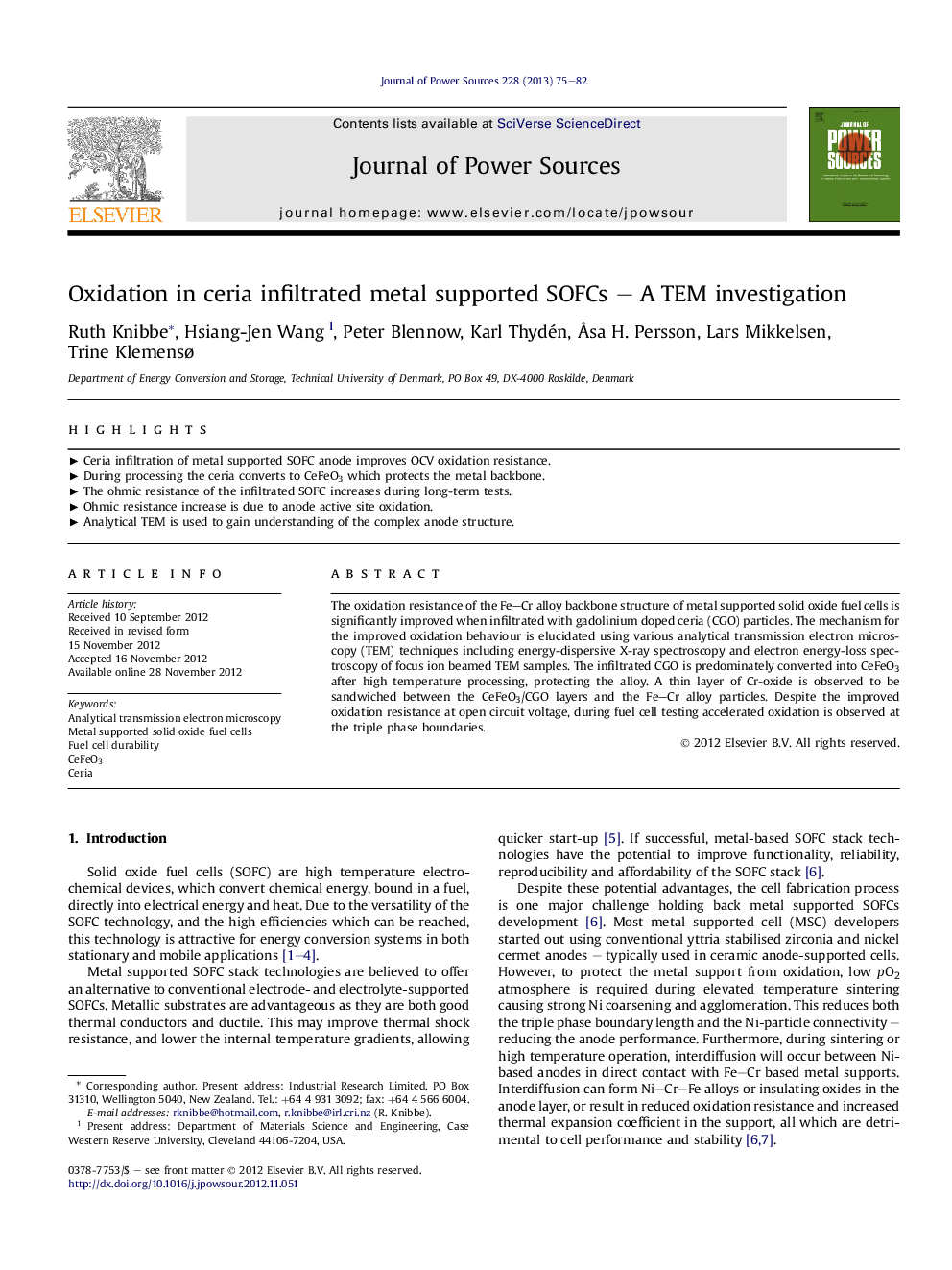| Article ID | Journal | Published Year | Pages | File Type |
|---|---|---|---|---|
| 1288186 | Journal of Power Sources | 2013 | 8 Pages |
The oxidation resistance of the Fe–Cr alloy backbone structure of metal supported solid oxide fuel cells is significantly improved when infiltrated with gadolinium doped ceria (CGO) particles. The mechanism for the improved oxidation behaviour is elucidated using various analytical transmission electron microscopy (TEM) techniques including energy-dispersive X-ray spectroscopy and electron energy-loss spectroscopy of focus ion beamed TEM samples. The infiltrated CGO is predominately converted into CeFeO3 after high temperature processing, protecting the alloy. A thin layer of Cr-oxide is observed to be sandwiched between the CeFeO3/CGO layers and the Fe–Cr alloy particles. Despite the improved oxidation resistance at open circuit voltage, during fuel cell testing accelerated oxidation is observed at the triple phase boundaries.
►Ceria infiltration of metal supported SOFC anode improves OCV oxidation resistance. ► During processing the ceria converts to CeFeO3 which protects the metal backbone. ► The ohmic resistance of the infiltrated SOFC increases during long-term tests. ► Ohmic resistance increase is due to anode active site oxidation. ► Analytical TEM is used to gain understanding of the complex anode structure.
